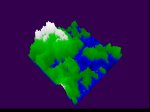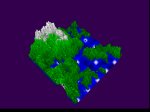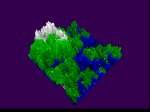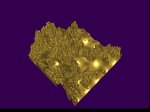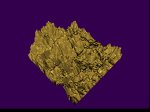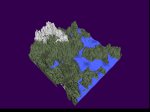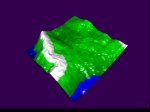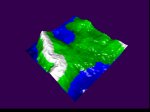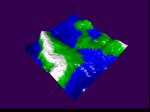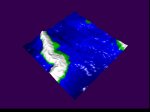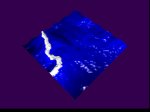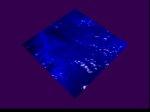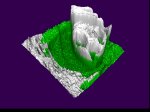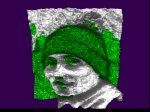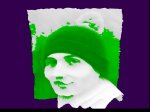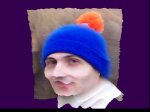SvenGL | C++ SvenGL Landscape Gallery
All images were created using Landscape in a resolution of 1024x768 pixels, 24-bit colour depth. The computer was an AMD Athlon Thunderbird 900 MHz, equipped with a CardExpert GeForce2 MX graphics card, running Windows 98. OpenGL's anti-aliasing was disabled and the images were converted from BMP to JPG (because each bitmap file was about 2.25 MB).
Click on the small images to view their full-sized versions.
(a)
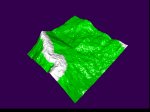
|
(b)
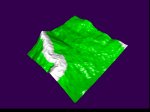
|
(c)
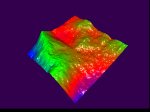
|
(d)
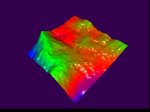
|
(e)
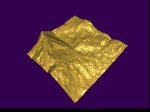
|
(f)
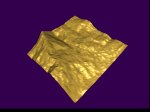
|
(g)
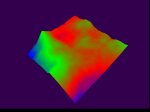
|
(h)
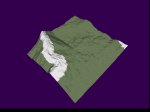
|
| Landscape has the ability to use bitmap files as a template for building the polygonal structure of a landscape (it converts each pixel to a brightness value and uses this to calculate the height of the corresponding vertex). Because 2D plasma clouds are perfectly suited for this task, I used Fractint (wiki) to construct a plasma map and scaled it to 128x128 (= 16,384) pixels out of which the landscape was constructed. I disabled the sea in all the above images and lighting was enabled (except in (g)). Surface normals were interpolated in (b), (d), and (f) and not in (a), (c), and (e) (you can clearly see the triangles out of which the landscape is constructed). In (a) and (b) the colours were obtained by interpolating the height of each point in the landscape, in (c) and (d) I interpolated the colours of the original plasma field bitmap and in (e) and (f) I used gold material. Using the original colours and disabling lighting resulted in (g). I used texture mapping to create (h). | |
(a)
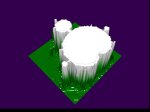
|
(b)
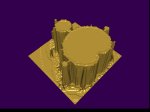
|
| Using Fractint (wiki) I created a rudimentary image of the Mandelbrot set and scaled it to 96x96 (= 9,216) pixels. Lighting was enabled and interpolation of the surface normals was disabled. In (a) I coloured each triangle by interpolating its vertices' heights, in (b) I used gold material. | |

